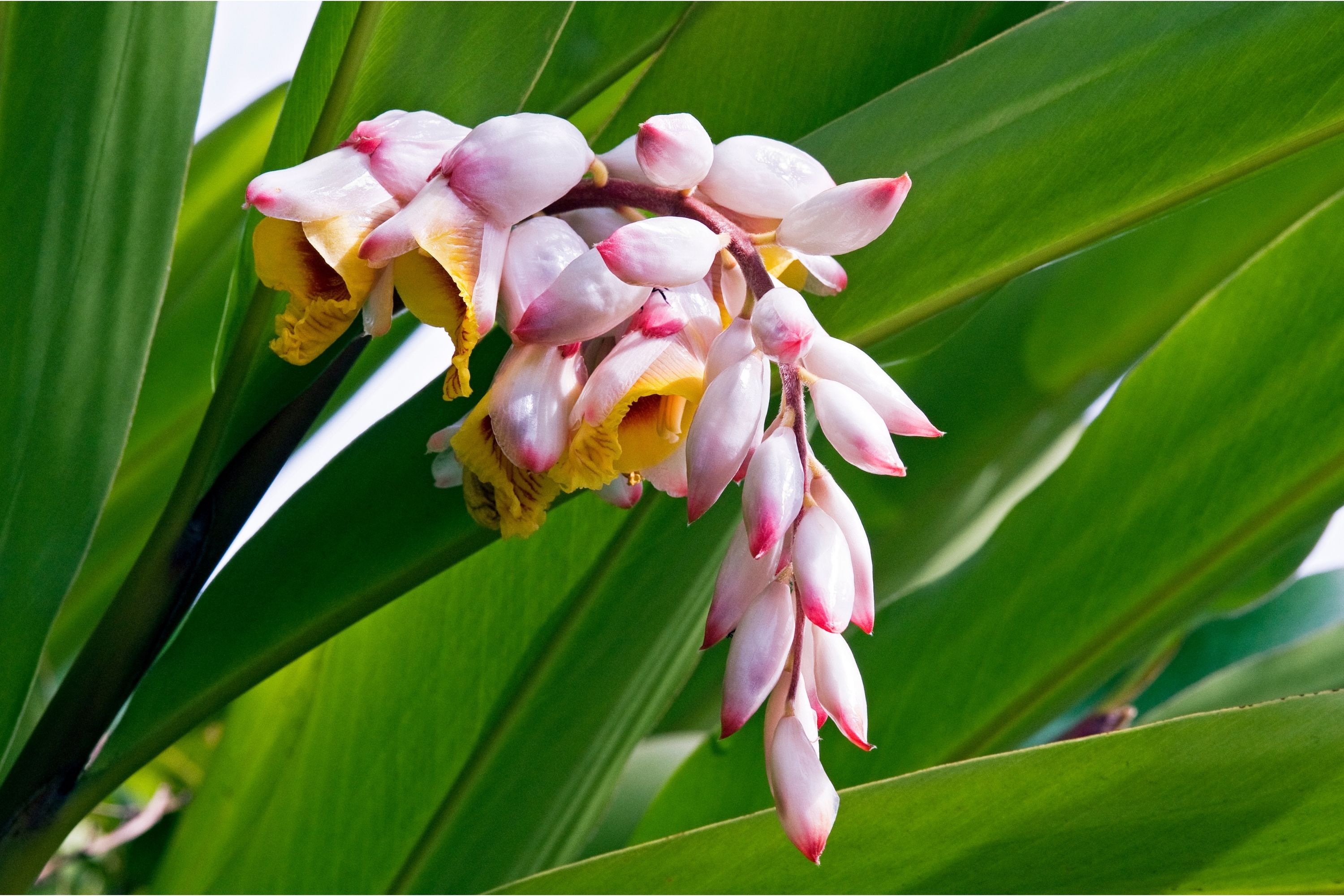Shell Ginger
(Alpinia zerumbet)

Description
Alpinia zerumbet, also known as shell ginger or pink porcelain lily, is a beautiful and exotic plant that belongs to the ginger family, Zingiberaceae. It is native to Southeast Asia and is widely cultivated in many parts of the world, including North America, South America, and Europe. In this article, we will explore the characteristics, uses, and cultivation of Alpinia zerumbet. Characteristics Alpinia zerumbet is a perennial herbaceous plant that can grow up to 8 feet tall. It has large, glossy leaves that are lance-shaped and grow in an alternate pattern. The leaves are about 1-2 feet long and 4-6 inches wide. They have a strong, aromatic scent when crushed. The flowers of Alpinia zerumbet are stunning, with clusters of pink or white blooms that resemble sea shells. The flowers are about 1-2 inches in diameter and have a sweet, pleasant fragrance. They bloom in the summer and fall and are followed by small, greenish-yellow fruits that are not edible. Uses Alpinia zerumbet is widely used for its medicinal and culinary properties. In traditional medicine, the plant has been used to treat a variety of ailments, including fever, cough, and digestive issues. The leaves and roots contain several compounds that have anti-inflammatory, antibacterial, and antioxidant properties. In culinary uses, the plant is often used as a spice or flavoring agent in Southeast Asian cuisine. The leaves and rhizomes are used to flavor curries, soups, and stews. In addition, the plant's flowers are used to make a fragrant tea. Cultivation Alpinia zerumbet is relatively easy to grow and care for, making it a popular choice for home gardeners. The plant prefers a warm, humid climate and partial shade. It can tolerate some direct sunlight, but too much can scorch the leaves. The plant grows best in well-draining soil that is rich in organic matter. It requires regular watering, but the soil should not be waterlogged. Overwatering can lead to root rot. Alpinia zerumbet can be propagated through division or by taking stem cuttings. Dividing the plant every few years will help keep it healthy and promote new growth. Stem cuttings should be taken from the base of the plant and rooted in moist soil. In conclusion, Alpinia zerumbet is a beautiful and versatile plant that is prized for its medicinal and culinary properties. Whether you are a home gardener or a professional horticulturist, this plant is a great addition to any garden. With the right care and cultivation, Alpinia zerumbet can thrive for many years, providing beauty and usefulness to your landscape.
Taxonomic tree:







